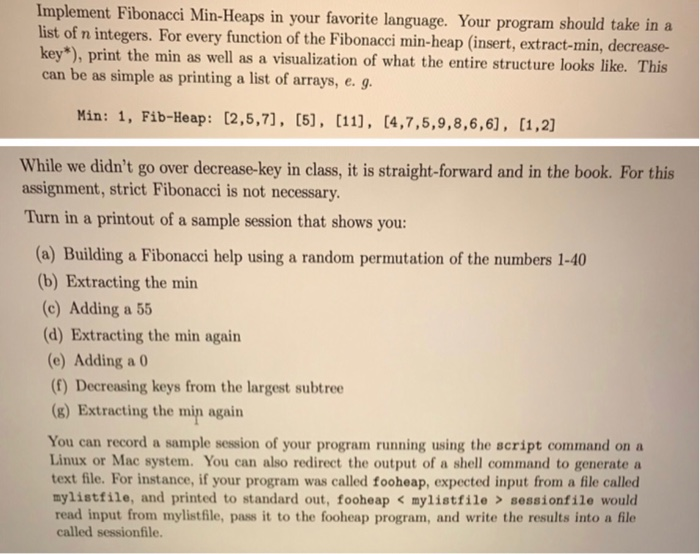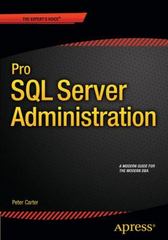steps and explanation needed. Thanks in advance
Implement Fibonacci Min-Heaps in your favorite language. Your program should take in a list of n integers. For every function of the Fibonacci min-heap (insert, extract-min, decrease- key*), print the min as well as a visualization of what the entire structure looks like. This can be as simple as printing a list of arrays, e. g. Min: 1, Fib-Heap: (2,5,7), (5), [11], [4,7,5,9,8,6,6], [1,2] While we didn't go over decrease-key in class, it is straight-forward and in the book. For this! assignment, strict Fibonacci is not necessary. Turn in a printout of a sample session that shows you: (a) Building a Fibonacci help using a random permutation of the numbers 1-40 (b) Extracting the min (c) Adding a 55 (d) Extracting the min again (e) Adding a 0 (f) Decreasing keys from the largest subtree (8) Extracting the min again You can record a sample session of your program running using the script command on a Linux or Mac system. You can also redirect the output of a shell command to generate a text file. For instance, if your program was called fooheap, expected input from a file called mylistfile, and printed to standard out, fooheap sessionfile would read input from mylist file, pass it to the fooheap program, and write the results into a file called sessionfile. Implement Fibonacci Min-Heaps in your favorite language. Your program should take in a list of n integers. For every function of the Fibonacci min-heap (insert, extract-min, decrease- key*), print the min as well as a visualization of what the entire structure looks like. This can be as simple as printing a list of arrays, e. g. Min: 1, Fib-Heap: (2,5,7), (5), [11], [4,7,5,9,8,6,6], [1,2] While we didn't go over decrease-key in class, it is straight-forward and in the book. For this! assignment, strict Fibonacci is not necessary. Turn in a printout of a sample session that shows you: (a) Building a Fibonacci help using a random permutation of the numbers 1-40 (b) Extracting the min (c) Adding a 55 (d) Extracting the min again (e) Adding a 0 (f) Decreasing keys from the largest subtree (8) Extracting the min again You can record a sample session of your program running using the script command on a Linux or Mac system. You can also redirect the output of a shell command to generate a text file. For instance, if your program was called fooheap, expected input from a file called mylistfile, and printed to standard out, fooheap sessionfile would read input from mylist file, pass it to the fooheap program, and write the results into a file called sessionfile







